Acanthopterygii
Teleosts may have a mobile premaxilla, but Acanthopterygians have a REALLY mobile premaxilla! This allows for even greater diversity than before!
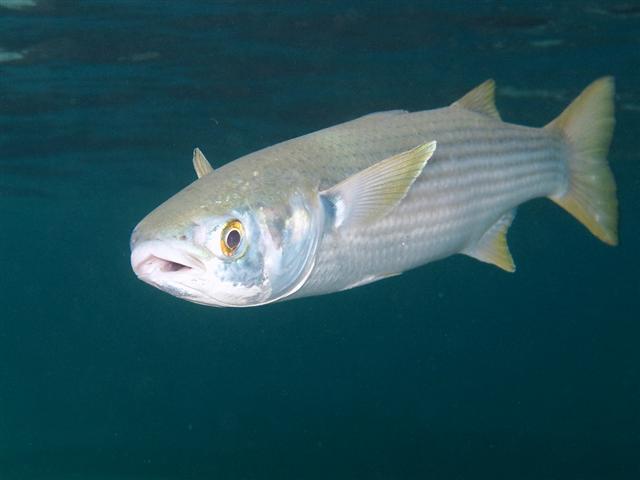
Mugilomorpha: Mullets
This series contains one order (Mugiliformes) with one family (Mugilidae). They have widely separated dorsal fins and lack a lateral line. They have a small, triangular mouth, which makes them look very cute (I think).
Atherinomorpha
This overarching group lacks a ball and socket joint between the palatine and maxilla, allowing the fishes to lock their jaws in the protruded position. You can think of this as the ABC group, since it includes Atheriniformes, Beloniformes, and Cypriniformes!
Atheriniformes: Silversides
This family usually has silvery sides (duh). They have flexible spines in the dorsal fin, and one in the anal fin. Let's go to las familias, shall we?
By CHUCAO (Own work) [CC BY-SA 3.0], via Wikimedia Commons
Atherinopsidae: New World Silversides
These fishes have widely spaced dorsal fins and highly placed pectoral fins, more dorsal than ventral. Sometimes they have a transluscent body.
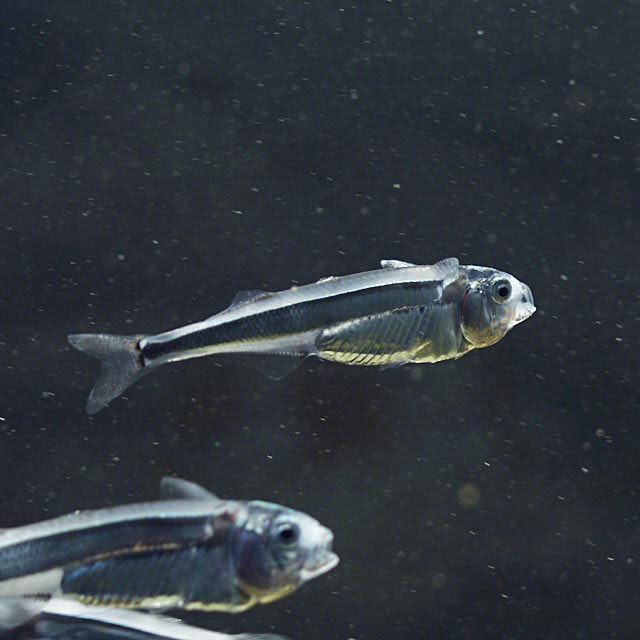
Notocheiridae: Surf Sardines
This skinny fishies have an expanded anterior region, making it look as if they're puffing out their chest to impress the fish ladies. Their pectoral fins are super close to the dorsal fins, almost like dual dorsal fins in progress.
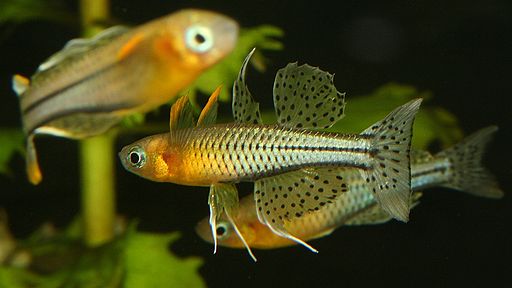
By Der Regenbogenfisch (Diskussion) (Self-photographed) [CC BY-SA 3.0 de], via Wikimedia Commons
Melanotaeniidae: Rainbowfishes, Blue Eyes
This family can be identified by a membrane that attaches the innermost pelvic ray to the abdomen, although this can be easily broken during handling. Some species have a largish dorsal spine.
Atherionidae: Pricklenose Silversides
This family contains one genus, Atherion. Their mouth/head is covered with rough denticles, which I guess makes them great at parties with the velcro dartboards.
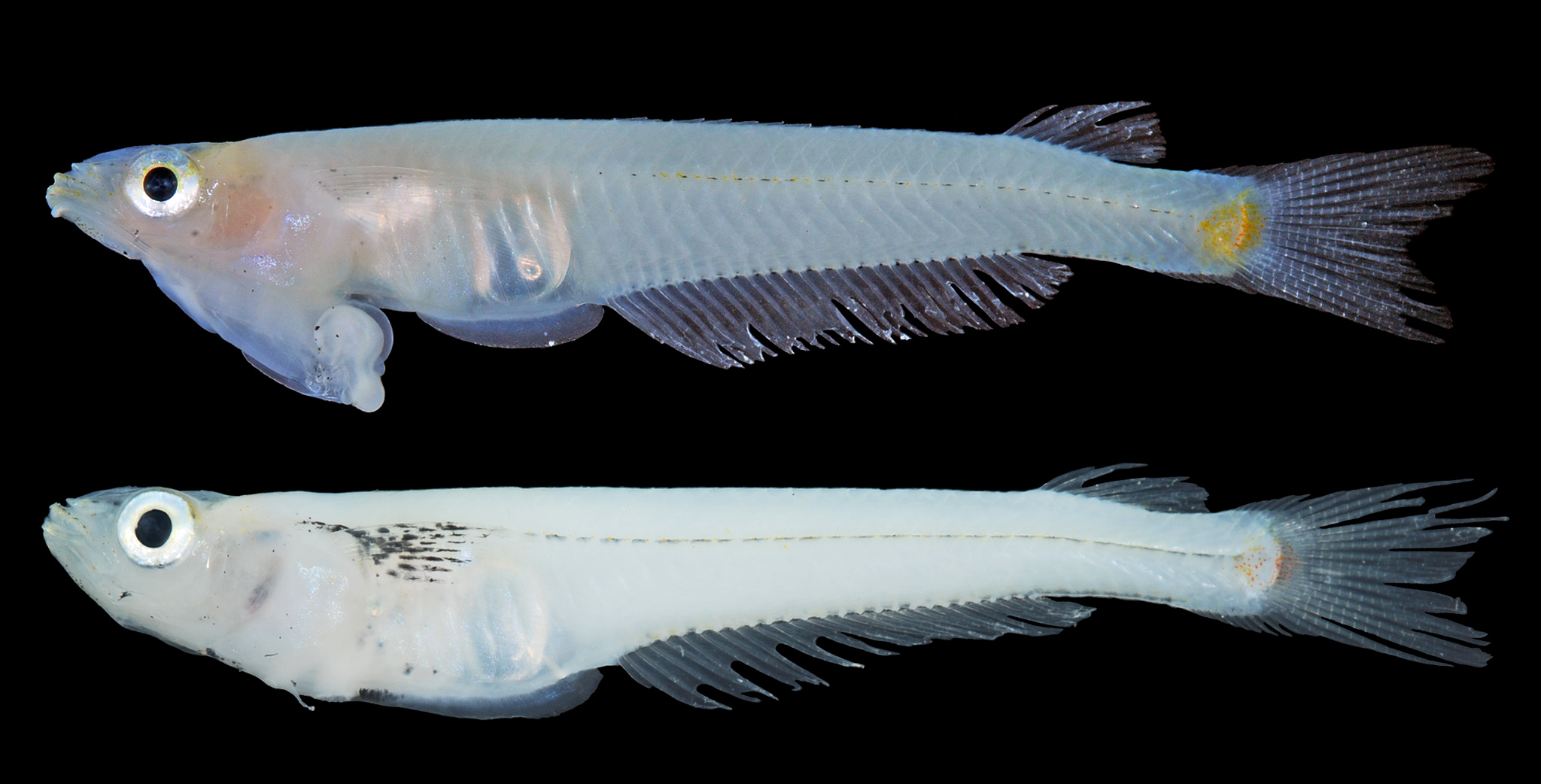
National Geographic, New Genitalia-Headed Fish Is Evolutionary Mystery
Phallostethidae: Tusked Silversides, Priapiumfishes
This family contains two subfamilies, one of which contains only Dentatherina merceri, the Tusked Silverside. But that's not what makes this family weird as hell. "Priapum" is greek for "penis," so these fishes are "penis-fish." They get their name because the males have an asymmetrical organ under their throat (note: external asymmetry is highly unusual in the animal kingdom). This organ contains the copulatory organs, which are used to internally fertilize the female (also highly unusual for a fish). Because of the organ's location, the cloacal opening is located on the throat, on the opposite side as the asymmetrical priapum. Also, I personally think they look like penises, which just makes it all the more hilarious.
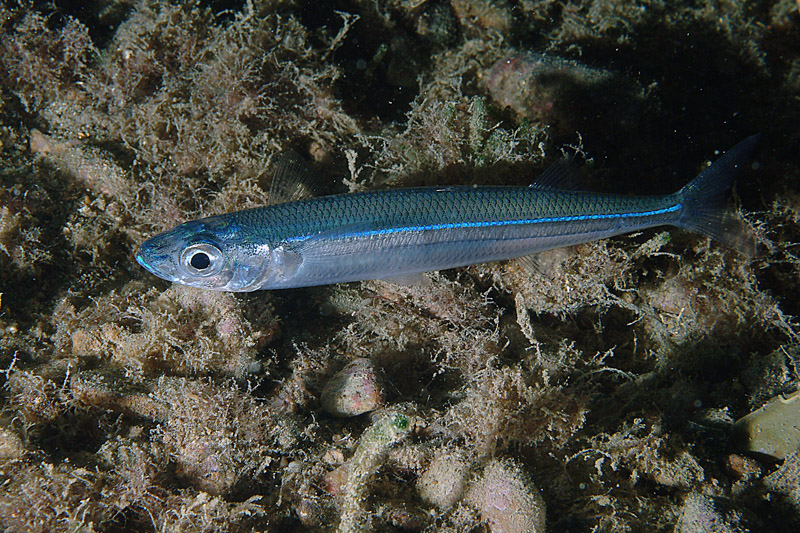
By Etrusko25 (Own work) [Public domain], via Wikimedia Commons
Atherinidae: Old World Silversides
Honestly, these are pretty non-descript silver fishes. They are long, skinny, with silvery sides. The dorsal fins are separated with flexible spines in the first one. That's all I've got.
Beloniformes: Needlefishes
Because they have needly jaws, the jaws are non-protrusible. There's also some loss of gill arch cartilage, but I highly doubt you'll be checking for that if you see one. They tend to live near the surface of the water.
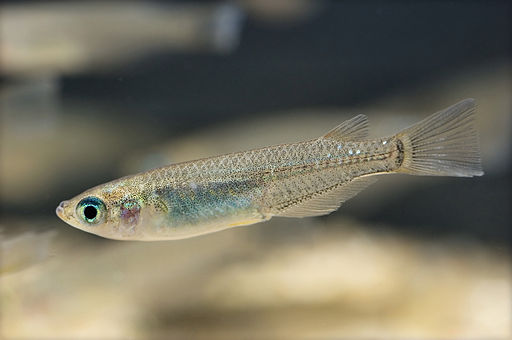
By Seotaro (Own work) [GFDL or CC BY-SA 3.0], via Wikimedia Commons
Adrianichthyidae: Rice Fishes
They get their name from their habit of making their habitat in rice paddies. The duckbilled buntingi, Andrianichthys kruyti, has its jaws permanently fixated into a protruded position, possibly for constant suction. Another species, Oryzias latipes, was the first vertebrate to reproduce in space.
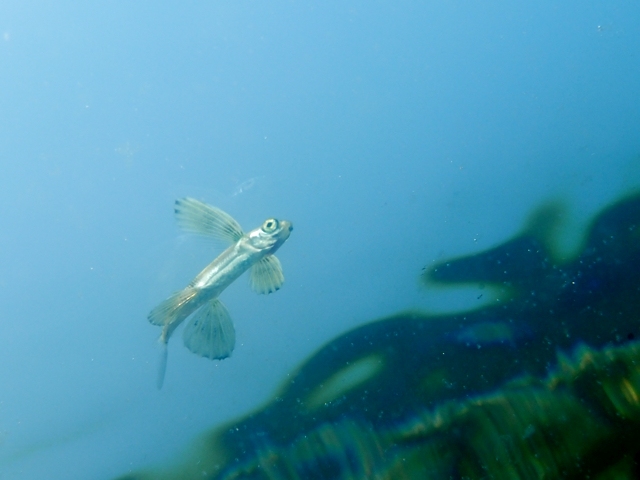
By Izuzuki (http://www.izuzuki.com/) [CC BY-SA 3.0], via Wikimedia Commons
Exocoetidae: Flyingfishes
How does on escape from an aquatic predator? Why, take to the skies! This family of fishes haas enlarged pectoral fins, and some have enlarged pelvic fins. The lower lobe of the caudal fin is usually larger than the upper lobe. When threatened, they can propel themselves out of the water and glide a short distance, hopefully to safety. They are of interest for studying aerodynamics, because the different body shapes exhibit tradeoffs in speed and hangtime.
By KevinHadley (Own work) [CC BY-SA 3.0], via Wikimedia Commons
Hemiramphidae: Halfbeaks
This fishes look like upside-down swordfish! The half of the beak that is elongated is the lower jaw, giving these fishes one hell of an underbite. Interestingly, They also lack a stomach, being one of a select few families (I'm unsure of the other ones). it was originally thought that this family was modified from needlefishes, but all juveniles in this order go through a "halfbeak" stage, indicating that the elongated lower jaw developed first, with the full beak of Belonidae being a further modification. This family also includes the genus Zenarchopterus, which is viviparous (gives birth to live young).
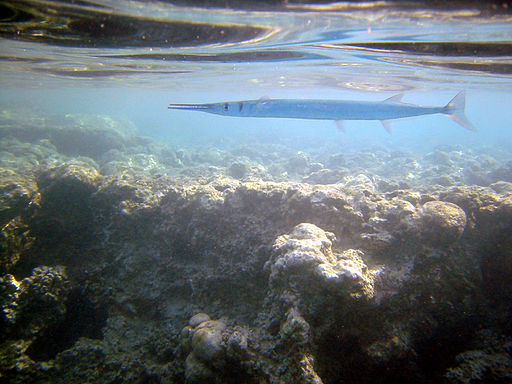
By Hannes Grobe/AWI (Own work) [CC BY 3.0], via Wikimedia Commons
Belonidae: Needlefishes
These fishes are scary stuff. They have the indicators of ambush predators, with long jaws full of sharp teeth, plus posteriorly placed dorsal/anal fins. They look for flashes from the prey fish, then accelerate and feed. This has led to some incidents, with the fish shooting out of the water with an unsuspecting person in the path. There have been fatalities caused by people being speared through the heart or brain. As I said, scary stuff. They also have green bones.
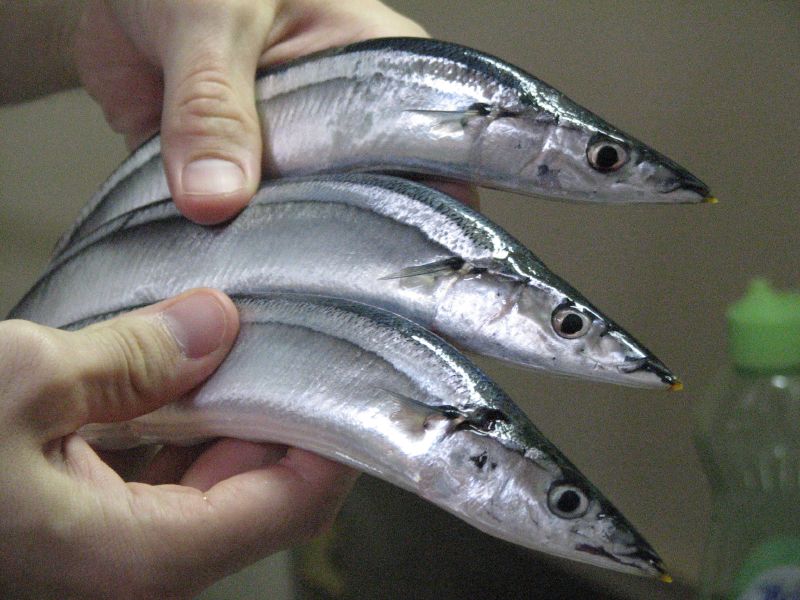
By beemartins from Matsushima, Miyagi (Flickr) [CC BY 2.0], via Wikimedia Commons
Scomberesocidae: Sauries
This family is similar to Belonidae, though they have more slender beaks, along with small finlets between the dorsal/anal fins and the caudal fin. The beak is not always elongated, and may be short in some species.
Cyprinodontiformes: Killifishes
These smallish fishes have rounded caudal fins. They scare me, mostly because I always thought they were called "killer-fishes."
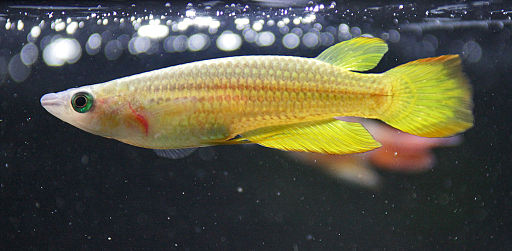
By Marrabbio2 (Own work) [CC BY-SA 3.0], via Wikimedia Commons
Aplocheilidae: Asian Rivulines
Females have a posteriorly set dorsal fin with a black blotch. They lay eggs in the mud that survive the dry seasons, and may not hatch if conditions are not right.
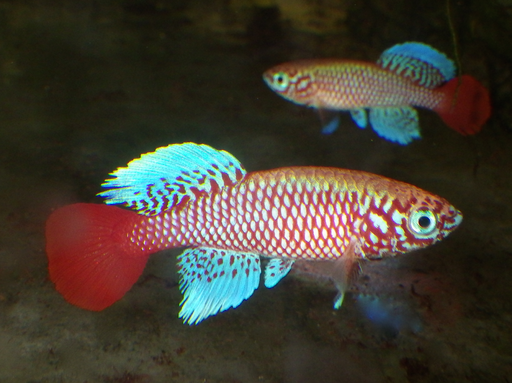
By Andrew Bogott (Own work) [CC BY-SA 4.0], via Wikimedia Commons
Nothobranchiidae: African Rivulines
These fishes are long-lived, making it to 80 years of age! Just like the Apocheilids, they too bury their eggs in mud, which can cause issues when the water is sprayed with pesticides. These species exhibit red stripes on the postorbital regions of males.
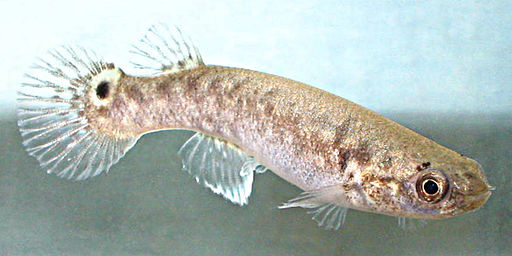
By Cardet co6cs (Own work) [CC BY-SA 3.0], via Wikimedia Commons
Rivulidae: New World Rivulines
There's not much to say about this family as a whole. However, one species, Kryptolebias marmoratus, is able to fertilize itself, being the only vertebrate with self-fertilization abilities.
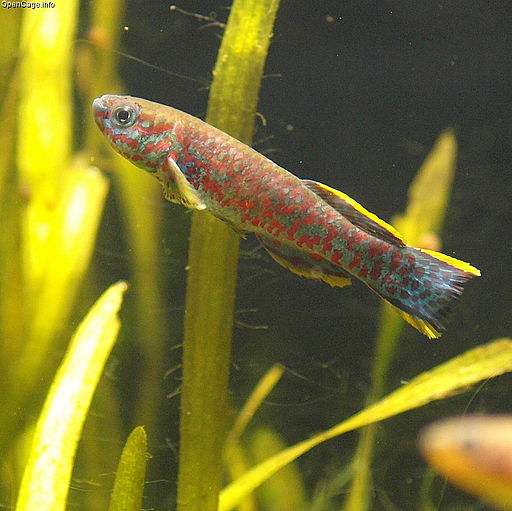
By opencage (http://opencage.info/pics/large_16187.asp) [CC BY 2.5], via Wikimedia Commons
Profundulidae: Middle American Killifishes
There is only one genus, Profundulus. They're found in Central America. There are some differentiating gill raker features, but nothing that you're going to be tested on.
By Cedricguppy - Loury Cédric (Own work) [CC BY-SA 4.0], via Wikimedia Commons
Goodeidae: Goodeids
These fishes are often called splitfins, because the anterior rays of the anal fin are separate from the rest.
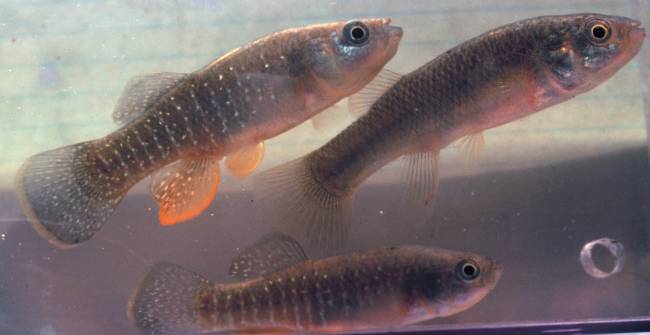
NOAA, public domain
Fundulidae: Topminnows
These fishes are notable for their twisted maxilla bones. If that's all that it takes to be in a separate family, then I don't even know. They do have one species, Fundulus heteroclitus, which is known as the Mummichog. If that isn't a ridiculous name (with a slightly sexual scientific name) then I still don't even know.
By Joanbanjo (Own work) [CC BY-SA 3.0], via Wikimedia Commons
Valenciidae: Valencia Toothcarps
There is one genus, Valencia, with two to three recognized species. They haven't done much exciting things yet, but there's still plenty of time.
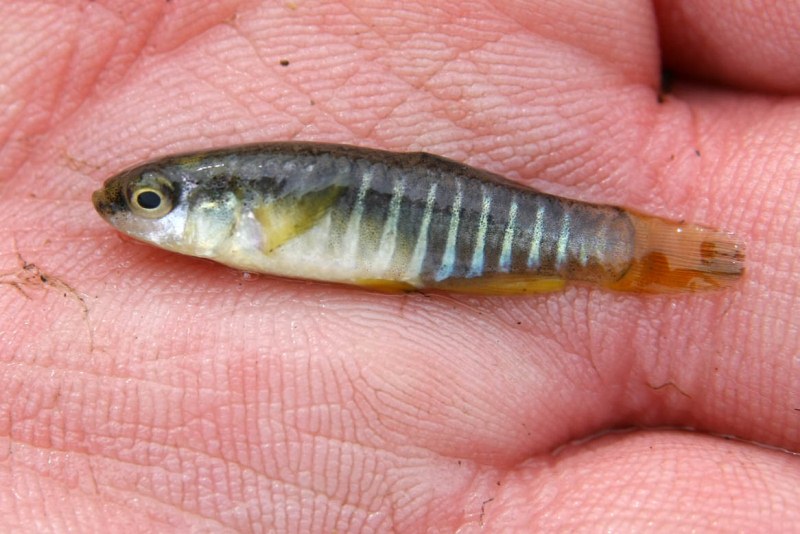
By Etrusko25 (Own work) [CC BY-SA 3.0 or GFDL], via Wikimedia Commons
Cyprinodontidae: Pupfishes
Found in more extreme conditions than the average fish, they are found in many fresh and brackish habitats. The common name comes from their behavior of acting similar to puppies...if puppies were fish.
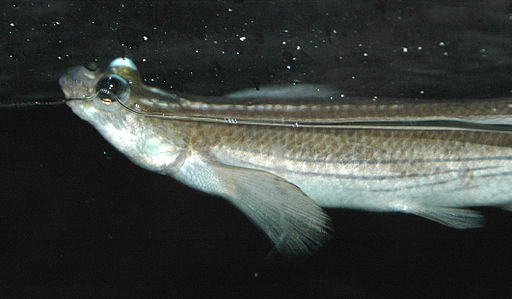
By James St. John (Anableps anableps (largescale four-eyed fish) 2) [CC BY 2.0], via Wikimedia Commons
Anablepidae: Four-Eyed Fishes
So, super cool fish here. Based on physics, air and water have different refractions, which means that the image seen in air might be blurry and unfocused underwater. So if a fish wanted to see in both air and water, it would need a good method to do so. The Anablepids have this ability, with the pupil split horizontally. This allows the fish to focus both above and below water.
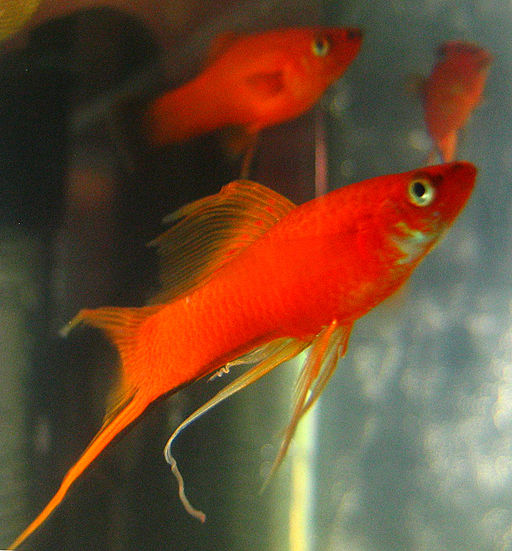
By Bastet78 (own work (my aquarium)) [GFDL, CC-BY-SA-3.0 or CC BY-SA 2.5-2.0-1.0], via Wikimedia Commons
Poeciliidae: Livebearers
These fishes, also known as swordtails, are known for being viviparous (giving birth to live young).
Percomorpha
This extremely diverse group of fishes is at the top of the tree, saving "the best for last." They include the group Smegmamorpha, which is a great name (DO NOT look up smegma). This group includes a ton of families. Go ahead, click the link!